Nuno Vasconcelos
EgoPrivacy: What Your First-Person Camera Says About You?
Jun 13, 2025Abstract:While the rapid proliferation of wearable cameras has raised significant concerns about egocentric video privacy, prior work has largely overlooked the unique privacy threats posed to the camera wearer. This work investigates the core question: How much privacy information about the camera wearer can be inferred from their first-person view videos? We introduce EgoPrivacy, the first large-scale benchmark for the comprehensive evaluation of privacy risks in egocentric vision. EgoPrivacy covers three types of privacy (demographic, individual, and situational), defining seven tasks that aim to recover private information ranging from fine-grained (e.g., wearer's identity) to coarse-grained (e.g., age group). To further emphasize the privacy threats inherent to egocentric vision, we propose Retrieval-Augmented Attack, a novel attack strategy that leverages ego-to-exo retrieval from an external pool of exocentric videos to boost the effectiveness of demographic privacy attacks. An extensive comparison of the different attacks possible under all threat models is presented, showing that private information of the wearer is highly susceptible to leakage. For instance, our findings indicate that foundation models can effectively compromise wearer privacy even in zero-shot settings by recovering attributes such as identity, scene, gender, and race with 70-80% accuracy. Our code and data are available at https://github.com/williamium3000/ego-privacy.
EditAR: Unified Conditional Generation with Autoregressive Models
Jan 08, 2025
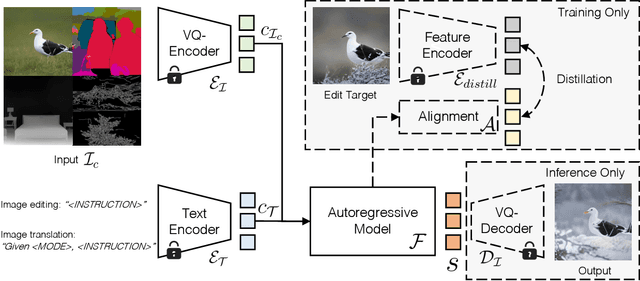

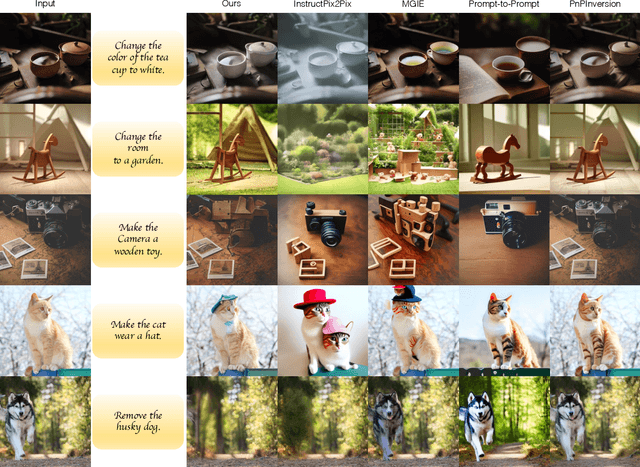
Abstract:Recent progress in controllable image generation and editing is largely driven by diffusion-based methods. Although diffusion models perform exceptionally well in specific tasks with tailored designs, establishing a unified model is still challenging. In contrast, autoregressive models inherently feature a unified tokenized representation, which simplifies the creation of a single foundational model for various tasks. In this work, we propose EditAR, a single unified autoregressive framework for a variety of conditional image generation tasks, e.g., image editing, depth-to-image, edge-to-image, segmentation-to-image. The model takes both images and instructions as inputs, and predicts the edited images tokens in a vanilla next-token paradigm. To enhance the text-to-image alignment, we further propose to distill the knowledge from foundation models into the autoregressive modeling process. We evaluate its effectiveness across diverse tasks on established benchmarks, showing competitive performance to various state-of-the-art task-specific methods. Project page: https://jitengmu.github.io/EditAR/
IntroStyle: Training-Free Introspective Style Attribution using Diffusion Features
Dec 19, 2024Abstract:Text-to-image (T2I) models have gained widespread adoption among content creators and the general public. However, this has sparked significant concerns regarding data privacy and copyright infringement among artists. Consequently, there is an increasing demand for T2I models to incorporate mechanisms that prevent the generation of specific artistic styles, thereby safeguarding intellectual property rights. Existing methods for style extraction typically necessitate the collection of custom datasets and the training of specialized models. This, however, is resource-intensive, time-consuming, and often impractical for real-time applications. Moreover, it may not adequately address the dynamic nature of artistic styles and the rapidly evolving landscape of digital art. We present a novel, training-free framework to solve the style attribution problem, using the features produced by a diffusion model alone, without any external modules or retraining. This is denoted as introspective style attribution (IntroStyle) and demonstrates superior performance to state-of-the-art models for style retrieval. We also introduce a synthetic dataset of Style Hacks (SHacks) to isolate artistic style and evaluate fine-grained style attribution performance.
Improving image synthesis with diffusion-negative sampling
Nov 08, 2024

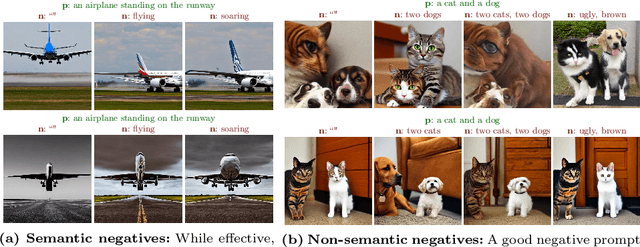

Abstract:For image generation with diffusion models (DMs), a negative prompt n can be used to complement the text prompt p, helping define properties not desired in the synthesized image. While this improves prompt adherence and image quality, finding good negative prompts is challenging. We argue that this is due to a semantic gap between humans and DMs, which makes good negative prompts for DMs appear unintuitive to humans. To bridge this gap, we propose a new diffusion-negative prompting (DNP) strategy. DNP is based on a new procedure to sample images that are least compliant with p under the distribution of the DM, denoted as diffusion-negative sampling (DNS). Given p, one such image is sampled, which is then translated into natural language by the user or a captioning model, to produce the negative prompt n*. The pair (p, n*) is finally used to prompt the DM. DNS is straightforward to implement and requires no training. Experiments and human evaluations show that DNP performs well both quantitatively and qualitatively and can be easily combined with several DM variants.
Pseudo-Probability Unlearning: Towards Efficient and Privacy-Preserving Machine Unlearning
Nov 04, 2024Abstract:Machine unlearning--enabling a trained model to forget specific data--is crucial for addressing biased data and adhering to privacy regulations like the General Data Protection Regulation (GDPR)'s "right to be forgotten". Recent works have paid little attention to privacy concerns, leaving the data intended for forgetting vulnerable to membership inference attacks. Moreover, they often come with high computational overhead. In this work, we propose Pseudo-Probability Unlearning (PPU), a novel method that enables models to forget data efficiently and in a privacy-preserving manner. Our method replaces the final-layer output probabilities of the neural network with pseudo-probabilities for the data to be forgotten. These pseudo-probabilities follow either a uniform distribution or align with the model's overall distribution, enhancing privacy and reducing risk of membership inference attacks. Our optimization strategy further refines the predictive probability distributions and updates the model's weights accordingly, ensuring effective forgetting with minimal impact on the model's overall performance. Through comprehensive experiments on multiple benchmarks, our method achieves over 20% improvements in forgetting error compared to the state-of-the-art. Additionally, our method enhances privacy by preventing the forgotten set from being inferred to around random guesses.
Adapting Diffusion Models for Improved Prompt Compliance and Controllable Image Synthesis
Oct 29, 2024Abstract:Recent advances in generative modeling with diffusion processes (DPs) enabled breakthroughs in image synthesis. Despite impressive image quality, these models have various prompt compliance problems, including low recall in generating multiple objects, difficulty in generating text in images, and meeting constraints like object locations and pose. For fine-grained editing and manipulation, they also require fine-grained semantic or instance maps that are tedious to produce manually. While prompt compliance can be enhanced by addition of loss functions at inference, this is time consuming and does not scale to complex scenes. To overcome these limitations, this work introduces a new family of \textit{Factor Graph Diffusion Models} (FG-DMs) that models the joint distribution of images and conditioning variables, such as semantic, sketch, depth or normal maps via a factor graph decomposition. This joint structure has several advantages, including support for efficient sampling based prompt compliance schemes, which produce images of high object recall, semi-automated fine-grained editing, text-based editing of conditions with noise inversion, explainability at intermediate levels, ability to produce labeled datasets for the training of downstream models such as segmentation or depth, training with missing data, and continual learning where new conditioning variables can be added with minimal or no modifications to the existing structure. We propose an implementation of FG-DMs by adapting a pre-trained Stable Diffusion (SD) model to implement all FG-DM factors, using only COCO dataset, and show that it is effective in generating images with 15\% higher recall than SD while retaining its generalization ability. We introduce an attention distillation loss that encourages consistency among the attention maps of all factors, improving the fidelity of the generated conditions and image.
Prompt Sliders for Fine-Grained Control, Editing and Erasing of Concepts in Diffusion Models
Sep 25, 2024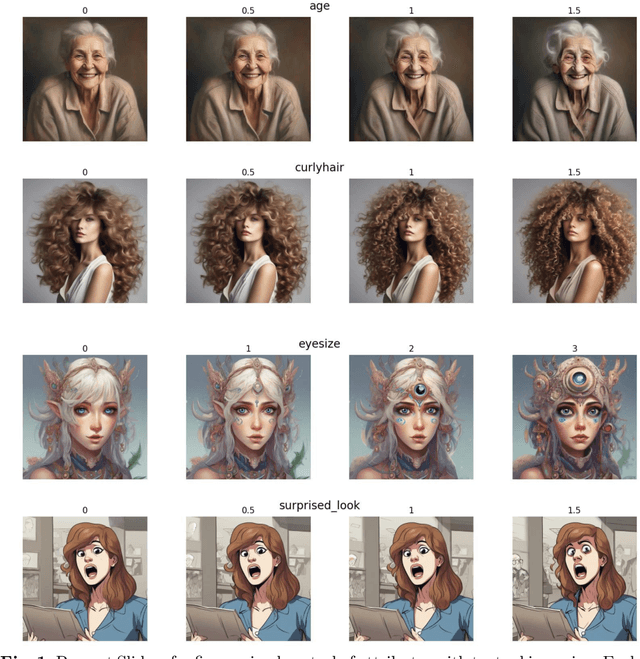
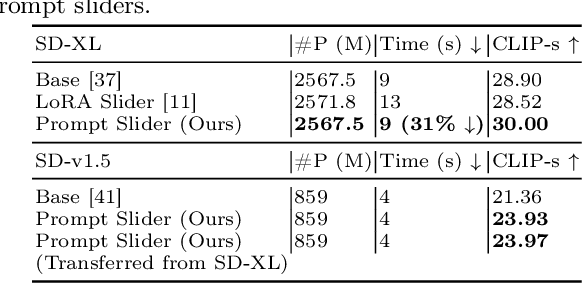

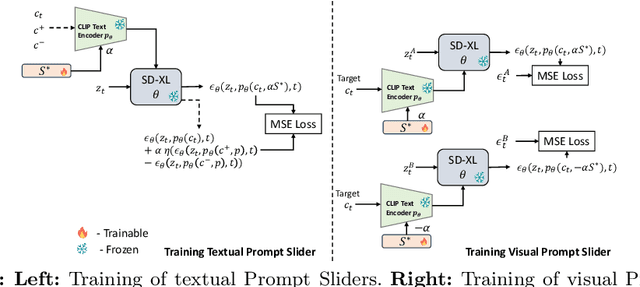
Abstract:Diffusion models have recently surpassed GANs in image synthesis and editing, offering superior image quality and diversity. However, achieving precise control over attributes in generated images remains a challenge. Concept Sliders introduced a method for fine-grained image control and editing by learning concepts (attributes/objects). However, this approach adds parameters and increases inference time due to the loading and unloading of Low-Rank Adapters (LoRAs) used for learning concepts. These adapters are model-specific and require retraining for different architectures, such as Stable Diffusion (SD) v1.5 and SD-XL. In this paper, we propose a straightforward textual inversion method to learn concepts through text embeddings, which are generalizable across models that share the same text encoder, including different versions of the SD model. We refer to our method as Prompt Sliders. Besides learning new concepts, we also show that Prompt Sliders can be used to erase undesirable concepts such as artistic styles or mature content. Our method is 30% faster than using LoRAs because it eliminates the need to load and unload adapters and introduces no additional parameters aside from the target concept text embedding. Each concept embedding only requires 3KB of storage compared to the 8922KB or more required for each LoRA adapter, making our approach more computationally efficient. Project Page: https://deepaksridhar.github.io/promptsliders.github.io/
Fairness and Bias Mitigation in Computer Vision: A Survey
Aug 05, 2024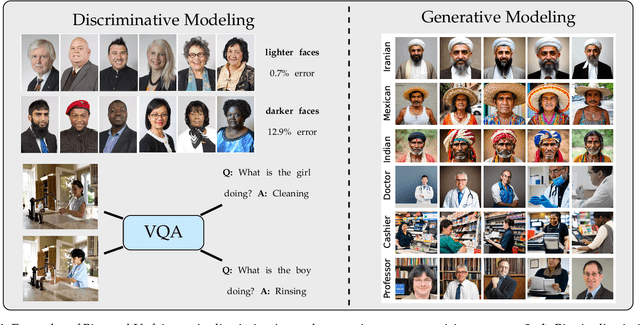
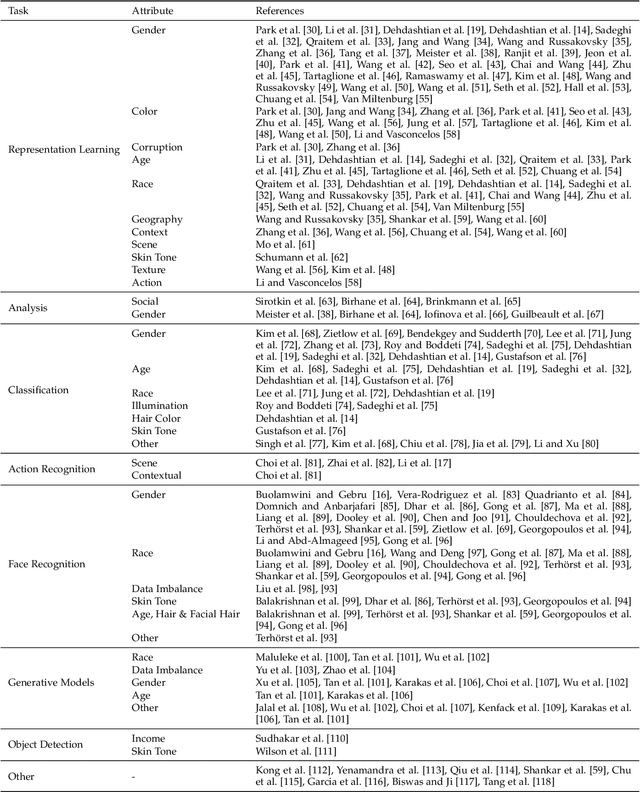
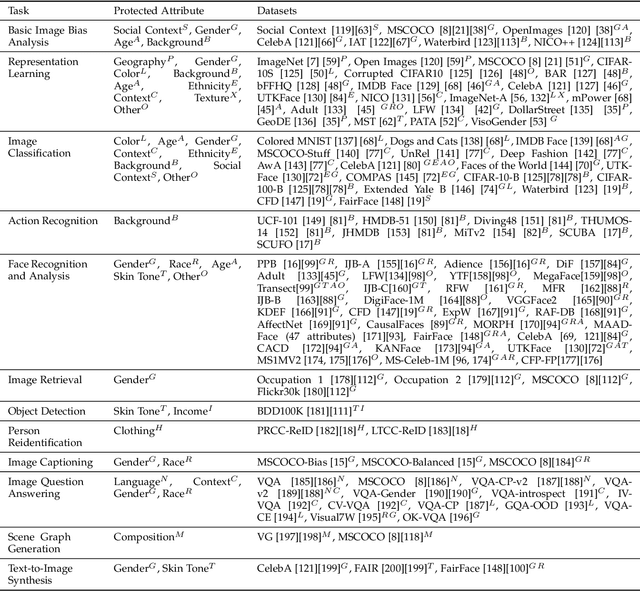

Abstract:Computer vision systems have witnessed rapid progress over the past two decades due to multiple advances in the field. As these systems are increasingly being deployed in high-stakes real-world applications, there is a dire need to ensure that they do not propagate or amplify any discriminatory tendencies in historical or human-curated data or inadvertently learn biases from spurious correlations. This paper presents a comprehensive survey on fairness that summarizes and sheds light on ongoing trends and successes in the context of computer vision. The topics we discuss include 1) The origin and technical definitions of fairness drawn from the wider fair machine learning literature and adjacent disciplines. 2) Work that sought to discover and analyze biases in computer vision systems. 3) A summary of methods proposed to mitigate bias in computer vision systems in recent years. 4) A comprehensive summary of resources and datasets produced by researchers to measure, analyze, and mitigate bias and enhance fairness. 5) Discussion of the field's success, continuing trends in the context of multimodal foundation and generative models, and gaps that still need to be addressed. The presented characterization should help researchers understand the importance of identifying and mitigating bias in computer vision and the state of the field and identify potential directions for future research.
Ego-VPA: Egocentric Video Understanding with Parameter-efficient Adaptation
Jul 28, 2024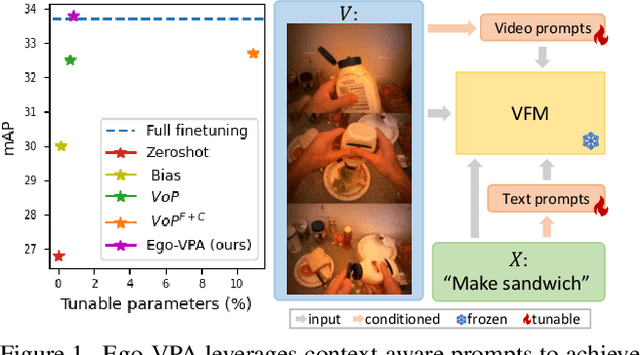

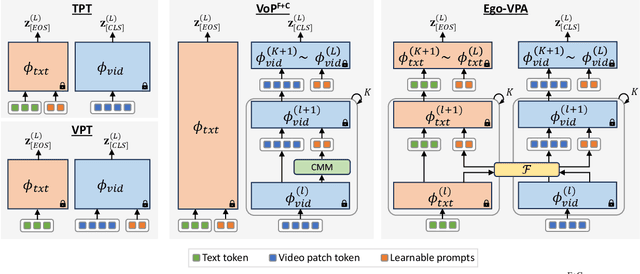
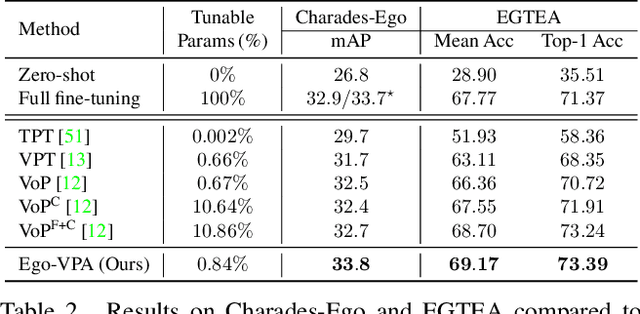
Abstract:Video understanding typically requires fine-tuning the large backbone when adapting to new domains. In this paper, we leverage the egocentric video foundation models (Ego-VFMs) based on video-language pre-training and propose a parameter-efficient adaptation for egocentric video tasks, namely Ego-VPA. It employs a local sparse approximation for each video frame/text feature using the basis prompts, and the selected basis prompts are used to synthesize video/text prompts. Since the basis prompts are shared across frames and modalities, it models context fusion and cross-modal transfer in an efficient fashion. Experiments show that Ego-VPA excels in lightweight adaptation (with only 0.84% learnable parameters), largely improving over baselines and reaching the performance of full fine-tuning.
Adapting Dual-encoder Vision-language Models for Paraphrased Retrieval
May 06, 2024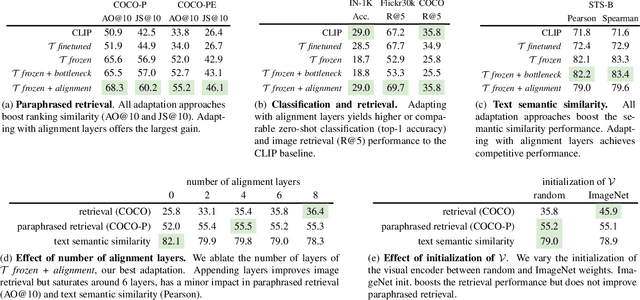
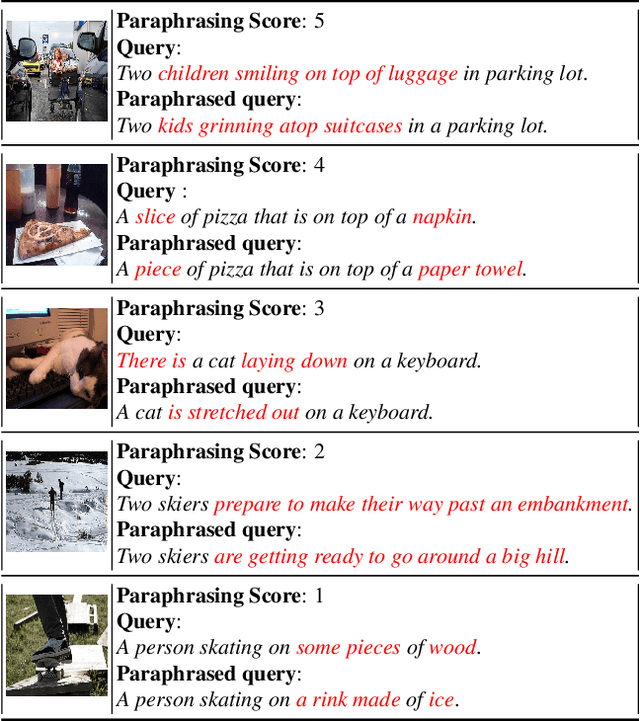
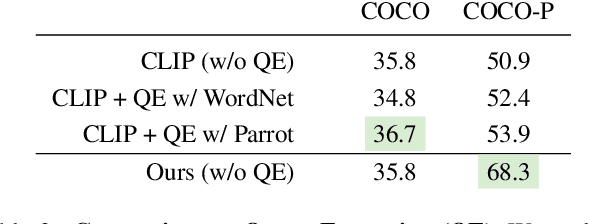

Abstract:In the recent years, the dual-encoder vision-language models (\eg CLIP) have achieved remarkable text-to-image retrieval performance. However, we discover that these models usually results in very different retrievals for a pair of paraphrased queries. Such behavior might render the retrieval system less predictable and lead to user frustration. In this work, we consider the task of paraphrased text-to-image retrieval where a model aims to return similar results given a pair of paraphrased queries. To start with, we collect a dataset of paraphrased image descriptions to facilitate quantitative evaluation for this task. We then hypothesize that the undesired behavior of existing dual-encoder model is due to their text towers which are trained on image-sentence pairs and lack the ability to capture the semantic similarity between paraphrased queries. To improve on this, we investigate multiple strategies for training a dual-encoder model starting from a language model pretrained on a large text corpus. Compared to public dual-encoder models such as CLIP and OpenCLIP, the model trained with our best adaptation strategy achieves a significantly higher ranking similarity for paraphrased queries while maintaining similar zero-shot classification and retrieval accuracy.
 Add to Chrome
Add to Chrome Add to Firefox
Add to Firefox Add to Edge
Add to Edge